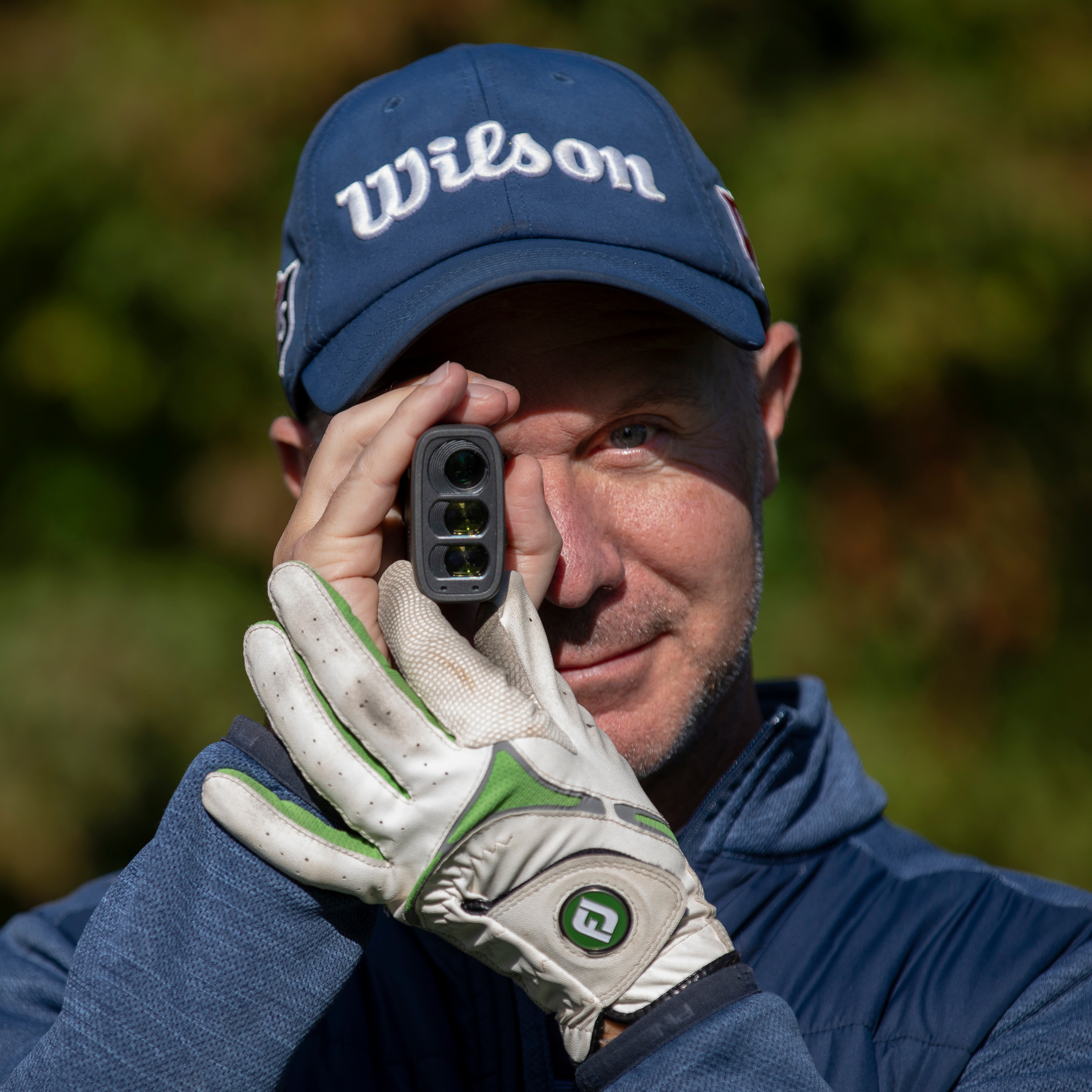Canon PowerShot Golf Rangefinder Review: Fast And Accurate But There's One Big Problem
Canon’s new golf laser rangefinder has an electronic viewfinder and stabilization, plus 11MP camera for on-course photos, but is it any good? We took one to the course to find out
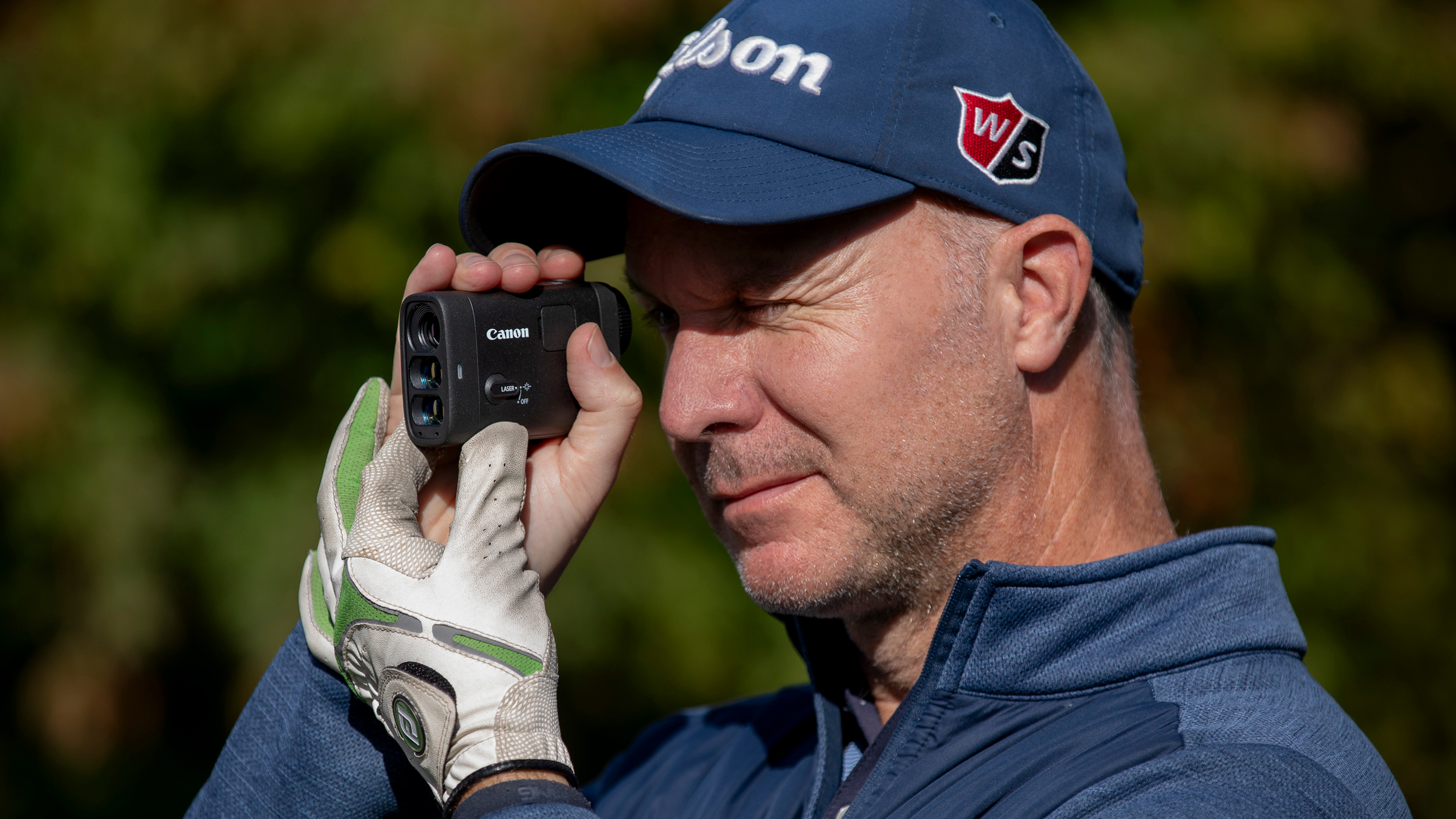
The Canon PowerShot Golf is a hi-tech laser rangefinder, with an EVF and Stabilizer that makes it a winner on the course for getting accurate yardage distances to flags. It has a 6x optical zoom, plus 12x digital zoom when hitting from distance. The camera is basic, but functional and overall, the Canon PowerShot Golf is an excellent, modern-day rangefinder, at a fair price.
-
+
Clear and colour electronic viewfinder
-
+
Image stabilization for steady focus
-
+
Pocket-sized and lightweight
-
+
12x digital zoom option
-
-
Disappointing image quality
-
-
Restrictive 4-6.4m minimum focusing distances
-
-
Charger not supplied
Why you can trust Golf Monthly

All I want from a laser rangefinder is to quickly focus on the flag to give me an accurate yardage, so I can choose the right golf club to try and get my ball close. If I have any doubt in how far it is, this doubt leads to bad swings, and bad results. So a good rangefinder can be a golfer’s best friend, and the gateway to better scores.
Canon’s new PowerShot Golf ($329.99/£329.99) is a unique device that aims to give you faster focusing for better yardages, but as well as being a laser rangefinder, it’s also a camera so you can take photos and videos while on the course.
Canon’s PowerShot Golf uses the standard rangefinder design, with three ‘lenses’ at the front. These work in unison to obtain accurate readings. I can confirm the Canon PowerShot Golf provides highly accurate yardages, comparing the figures to other Bushnell rangefinders, and my Garmin GPS watch, and golf playing partner’s GPS screen on his PowaKaddy electric golf trolley.

Color on the course
Compared to using my trusty Bushnell Rangefinder Tour V4 Slope Edition, the Canon PowerShot Golf’s viewfinder offers a full-colour view. This is thanks to its electronic viewfinder (EVF), a similar digital view to what you see in modern mirrorless camera. Whereas most rangefinders have optical viewfinders – what you see is what you get. A red crosshair grows from small to large once focused, plus yardage figures are in white, with the ‘Slope’ figure in yellow above. Plus there’s a green square in the centre when you’re taking photos.
Those of you unfamiliar with cameras, may well find using the Canon PowerShot Golf tricky to begin with, as it has a shutter button like Canon cameras - rather than a button you press to switch on a rangefinder, then press again to focus on your intended target.
On the Canon PowerShot Golf, you fully press the button to switch it on (a green flashing light appears at the rear), then you only ‘half press’ the button when you look through the viewfinder and focus on the flag. You get a reassuring vibration at the same time the yardage figures appear on screen, so you know you’ve achieved focus.
Canon's PowerShot Golf has a 6x optical zoom, and an optional 12x digital zoom if you need it, although I rarely zoomed in any further on the flags as I could lock onto targets with the 6x optical zoom nearly all the time. It’s handy to have this extra digital ‘zoom’ in the bag, such as when I was struggling to focus on flags in dark shadows of trees.
Subscribe to the Golf Monthly newsletter to stay up to date with all the latest tour news, equipment news, reviews, head-to-heads and buyer’s guides from our team of experienced experts.

I tested the Canon PowerShot Golf when I was playing on my local course, using it over a handful of different rounds, in different lighting conditions, from bright sunshine in the middle of the day, to low-light near sunset.
I found the Canon PowerShot Golf easy to use and aim it at the flags in the distance, and it was quick to focus and give me an accurate yardage. I could also use it to zap for distances to carry fairway bunkers, or over water. More than once I was able to pick the right club, helping my scores, and reduce those unwanted bogeys.
Although it’s small - and the smaller rangefinders are, the harder they are to hold still to focus effectively - thanks to Canon’s image stabilisation it’s really easy to lock on to flags even 200+ yards away. Canon says it’s able to focus on objects from 7 yards to 800 yards – I don’t know about that, although I was able to successfully zap objects on the course which were, apparently, 655 yards away!
I needed to use two hands generally to hold it steady - such as on colder days with cold hands, but that’s the technique I’d use for any rangefinder for the best accuracy. It comes in at approx 31 × 58.9 × 91.2mm and weighs just 151g, making it one of the more compact units around. It fits in your palm and is barely bigger or heavier than a deck of playing cards.
Comparing Canon's PowerShot Golf to a rangefinder without stabilization is chalk and cheese. The PowerShot Golf was so much steadier when looking through the viewfinder - making it much easier to lock focus on the flag fluttering on the green beyond.
However, there’s one area where Canon’s rangefinder struggled, like all rangefinders - when there’s trees and other distracting foliage directly behind the pin you’re targeting. It didn’t matter how much I tried to get the PowerShot Golf’s crosshairs to focus on the flag, when there’s a bunch of skinny trees right behind, with more contrasting bits for it to focus on, it will focus on that instead.

The Canon PowerShot Golf has a Slope mode that accounts for changes in elevation, with the slope figure in yellow above the actual distance to the flag in white. You can switch Slope on or off in the menu when you’re playing in competitions. Helpfully, a blinking blue light on the front shows when Slope mode is off, so your partners know you’re not cheating.
The Canon PowerShot Golf comes in a little case with magnetic button to ensure I clipped it closed. I used the velcro strap on the case to attach it to my golf bag for easy access. You can attach it to your belt if you want, although I found it distracting having it there when walking and swinging. It will also fit inside jacket pockets (if you’re wearing one) and although it could slip into my shorts and pants pockets, again I found it distracting as it was sticking out when hitting shots.
Take shots of golf shots!
The big difference between the Canon PowerShot Golf and the best golf rangefinders with slope, is it enables you to take photos and videos while on the golf course.
When you have the Canon's PowerShot Golf in Range+Photo mode you get an extra green box around the red crosshairs so you know you're in this mode. You focus as normal with a half-press, and a full-press of the button takes a photo, and the viewfinder goes black for confirmation.
It captures 11MP stills and Full HD video. But using what is basically a miniature compact camera you hold ‘front on’ (not side on like a camera which is easier to hold two-handed), but with a fixed focal length of 400mm, meant I was very restricted in what I could photograph.
It's a fun bonus to be able to take photos 'with superimposed distance information on the golf course' - effectively a screenshot of the flag you zapped with yardages on top. But I’m not sure I’d want to keep photos of random yardages, as they’re exactly that, random.
Even when you’re teeing off par 3s, the distance to flags constantly change, as tee markers move, as do pin positions. So while it’s novel to have a photo of a flag with the distances recorded on top, I can’t see myself referring to those images ever again. Perhaps I’m just a cynical old golfer?
Canon suggests this when using the PowerShot Golf:
“Create a personal course diary, complete with voice memos to record a breakdown of every shot. In the event of disputes or questions about rule compliance, golfers can use the camera to document their lie, the position of their ball, or any obstacles in their path. This visual evidence can help settle disagreements and maintain the integrity of the game.
The built-in camera is perfect for documenting those unforgettable moments, to remember a breathtaking course, for educational purposes, to track progress or even to share a winning swing on social media.”
Yes, you can capture basic course photos to use for reference, but I found it’s almost impossible to photograph anything or anyone remotely near me, such as a golf ball at your feet, or a player nearby. This is due to the ‘closest focusing distance’, which I found super restrictive. For photos and video, the closest focusing distance is approx 4m, which increases to approx 6.4m when in the Range+Photo mode I was usually using. So I often found I was simply too close to focus on whatever or whoever I was trying to photograph. I needed to be at least 50 yards from partners to take a photo of them playing during a round.
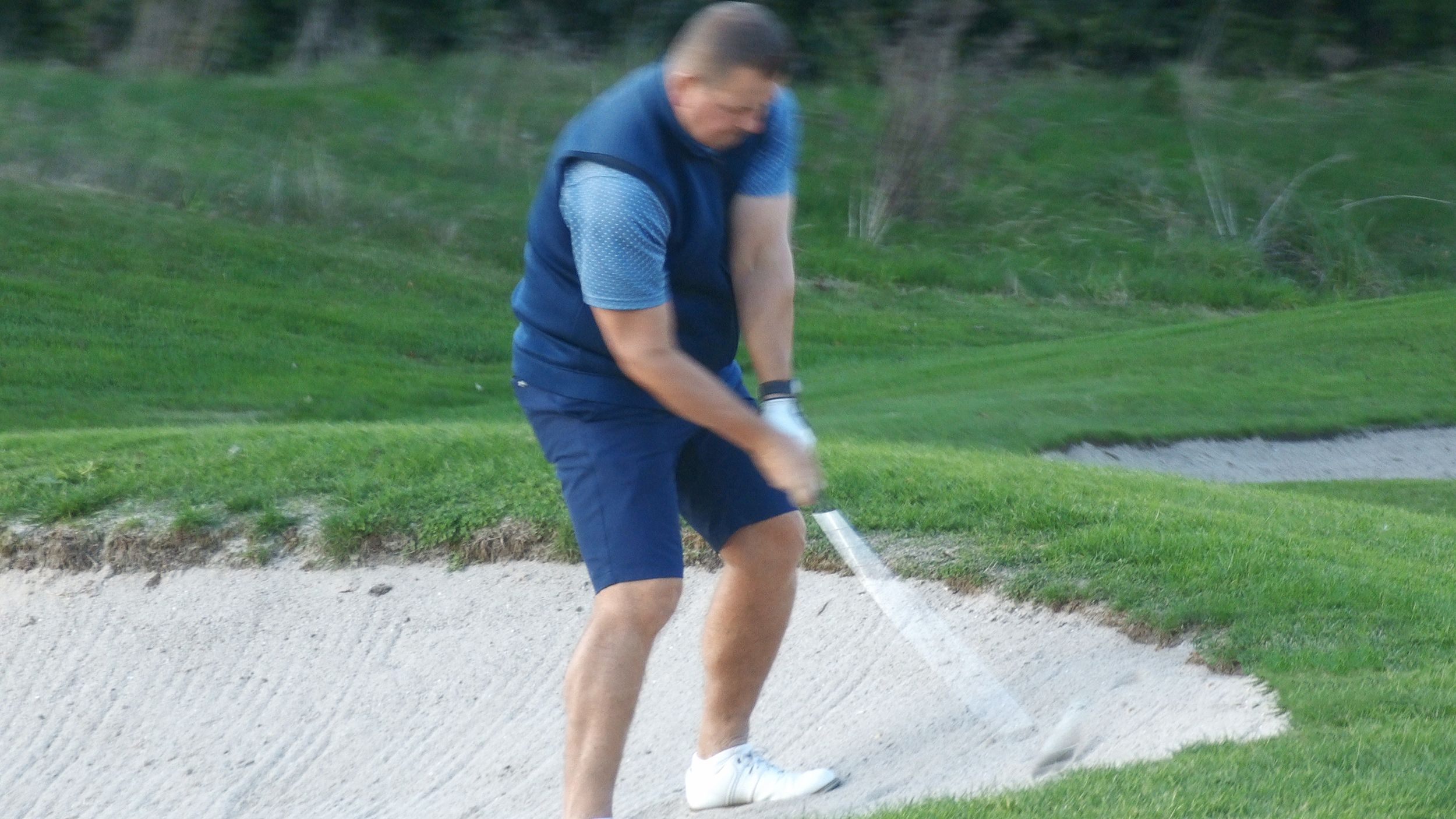
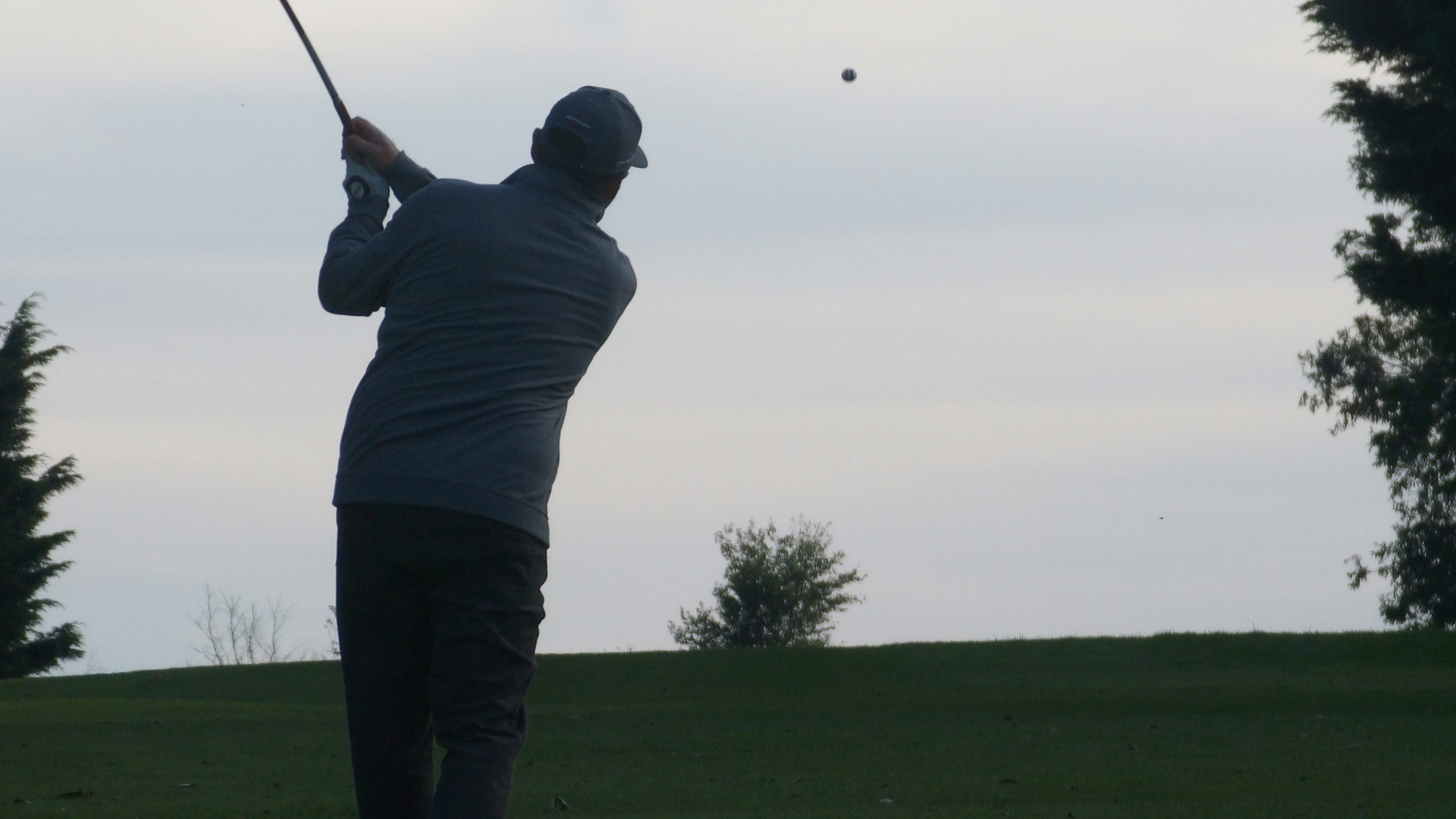
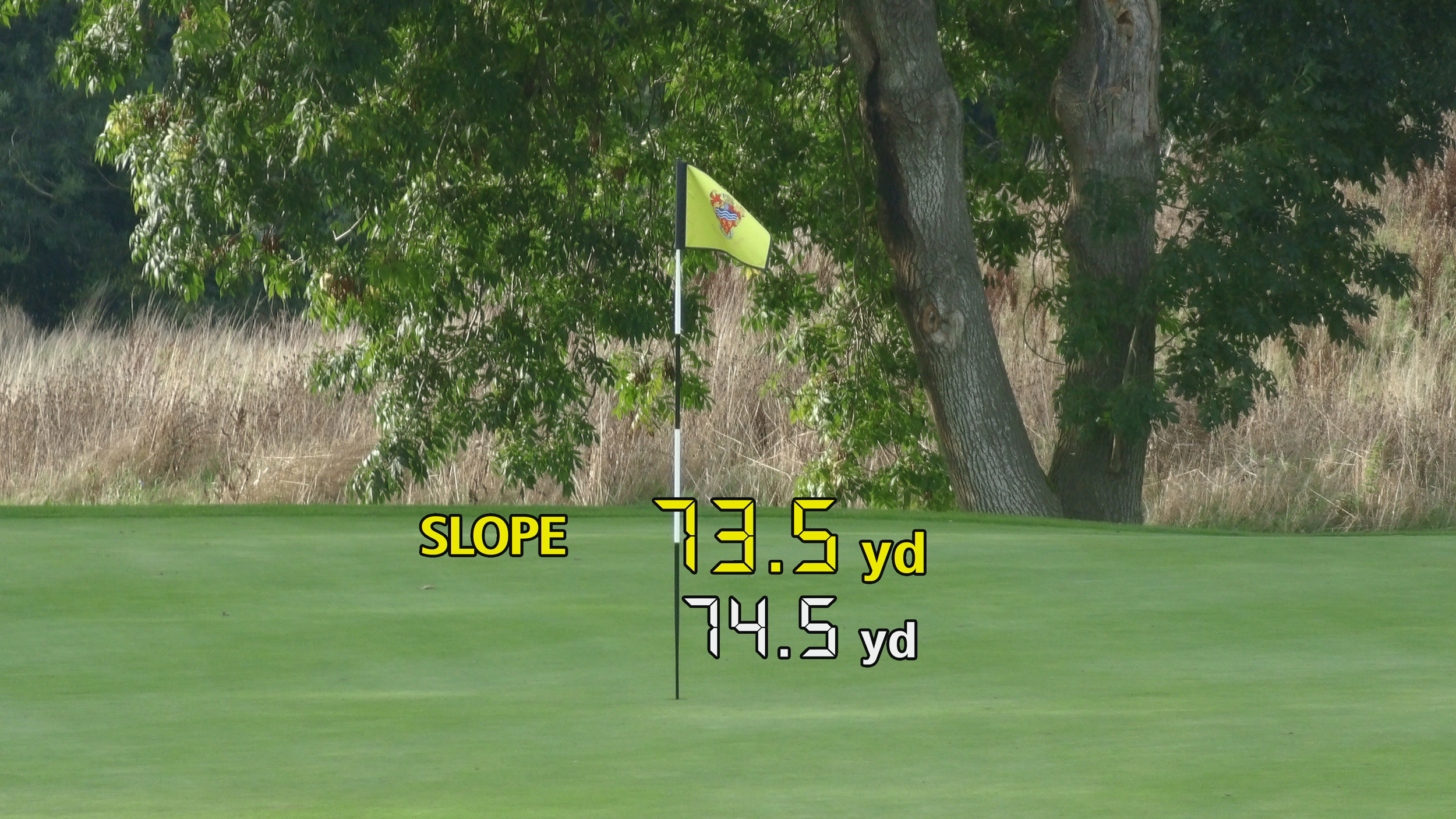
So, the Canon PowerShot Golf was okay for a quick snap of my golf playing partner across the other side of the fairway, but it was no use if I wanted to get a photo when we were both on the green, as I was always too close to be able to focus.
It was fun to attempt to take a few shots of my partners playing once I overcame focus distance issues, but disappointingly, the just camera wasn’t fast enough to get the shots, so action photos were mostly blurry. Sadly, while Canon PowerShot Golf was very quick to focus on flags, in photo mode it’s slower to focus on golfers, and there’s also a slight delay when you take a shot.
Getting technical in photography lingo – the camera’s shutter speeds were too slow for action shots, and too slow for 400m focal length, this equals both motion blur and camera shake blur. A double whammy! I also found the camera would struggle to expose for high-contrast scenes or subjects - such as a golfer back-lit by sunshine, or with dark shadows behind them.
Image quality overall is not great, compared by modern camera or smartphone camera standards. Even in sunny conditions the photo quality isn’t what you’d hope. But to be fair, the PowerShot Golf is tiny body, with a small 12mm diameter lens ‘aperture’, small ⅓-inch sensor, via a very small 400mm f/3.9 lens
As for video, it’s obviously not good etiquette (or safe) to start videoing partners mid round, and I’d only video myself or friends when we’re working on swings on the range. But there wasn’t enough room to stand back on the driving range to use the Canon PowerShot Golf. So we just used our iPhones to take photos or videos as usual.
Images and videos are saved on a microSDHC card (sold separately) slotted inside the camera. I used the microSDHC card card (in the SD card sized adapter) in a card reader and downloaded them to my laptop.
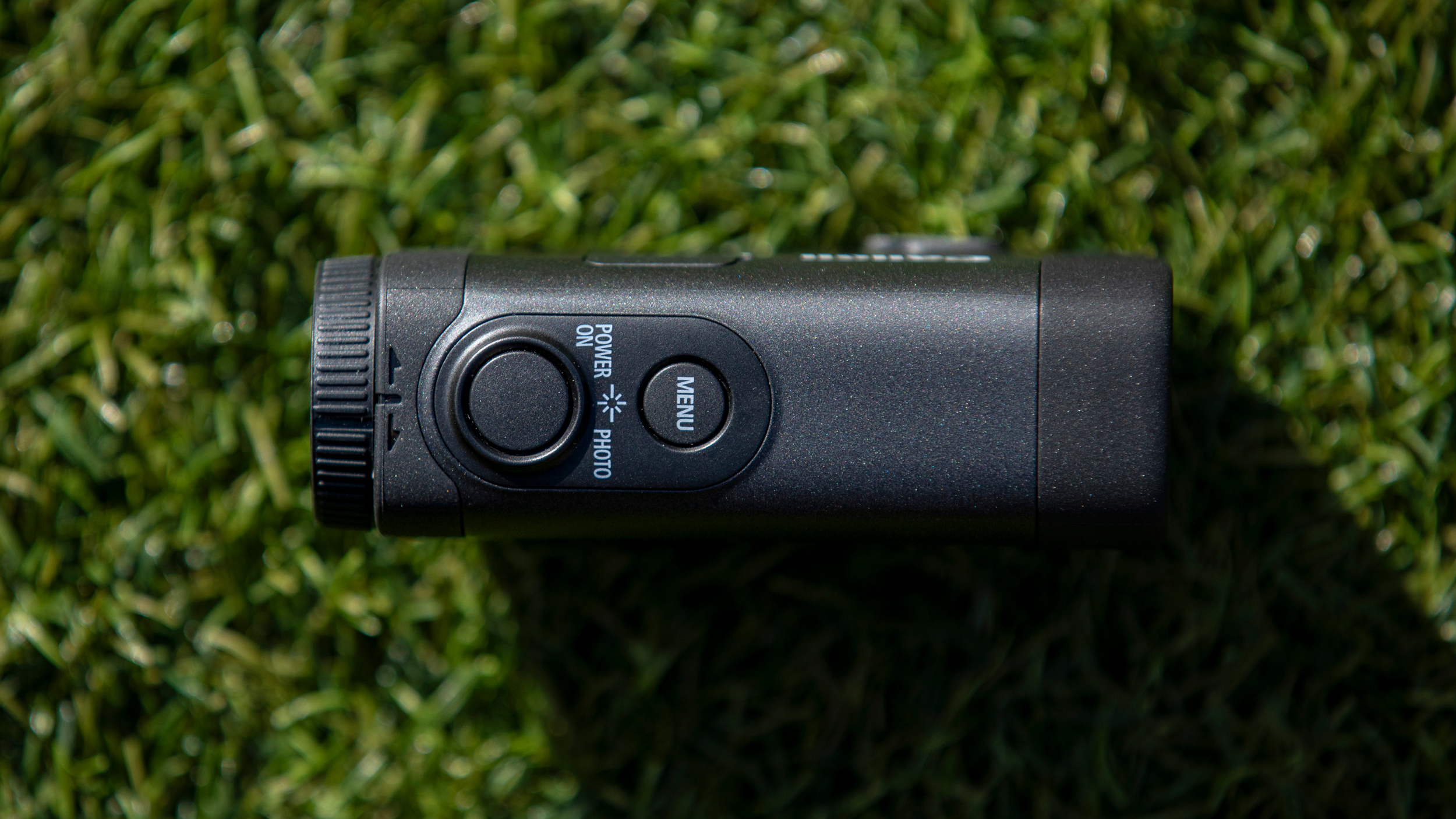
Menus and more
A bonus of Canon producing the PowerShot Golf is you have access to their clear and colourful menu systems to change settings. You access this via the menu button on top. Canon’s menus are much easier to understand, compared to other rangefinders where you have to press and hold one button and cycle through endless options by highlighting mono icons, and selecting Yes or No etc.
Initially it’s fiddly to use the menu, as I had to look through the electronic viewfinder, while using two fingers on top to press the main button, menu button, and cycle through options with my thumb on either the zoom and video buttons
You have options like to ‘play’ images, erase them, and format the card, and to change Mode from Range to Range+Photo, Slope on or off, Unit in yards or metres, and Vibration on and off. I found the menu is decent when you get used to it, and it’s easy to look through the viewfinder to check images in play mode..
The Canon PowerShot Golf has a rechargeable battery built in. I found battery power was good, using it every hole, for a full round, and taking 10-20 photos each round. The EVF and taking photos eats power, so it’s good there’s a battery power icon in the bottom right corner.
You could probably get two rounds of golf out of a fully-charged battery (as long as you don’t take lots of photos or video) before you’d need to charge it up again. Canon says viewing time should last approx 200 minutes, and be able to take approx 200 JPGs.
Compared to my Bushnell rangefinder I’ve used for a few years (note I don’t use it every shot as I have a GPS watch to give me yardages) which is still registering full power from the Duracell CR2 battery.
Disappointingly, Canon doesn’t supply a charger, not even a lead - but most of us have a USB-C to USB lead and power pack (I used my laptop charger cable, with an iPhone power pack) to be able to charge devices like this. Thankfully, the Canon PowerShot Golf was very quick to charge up again, only taking about 30-45 minutes to go from half to full charge again.
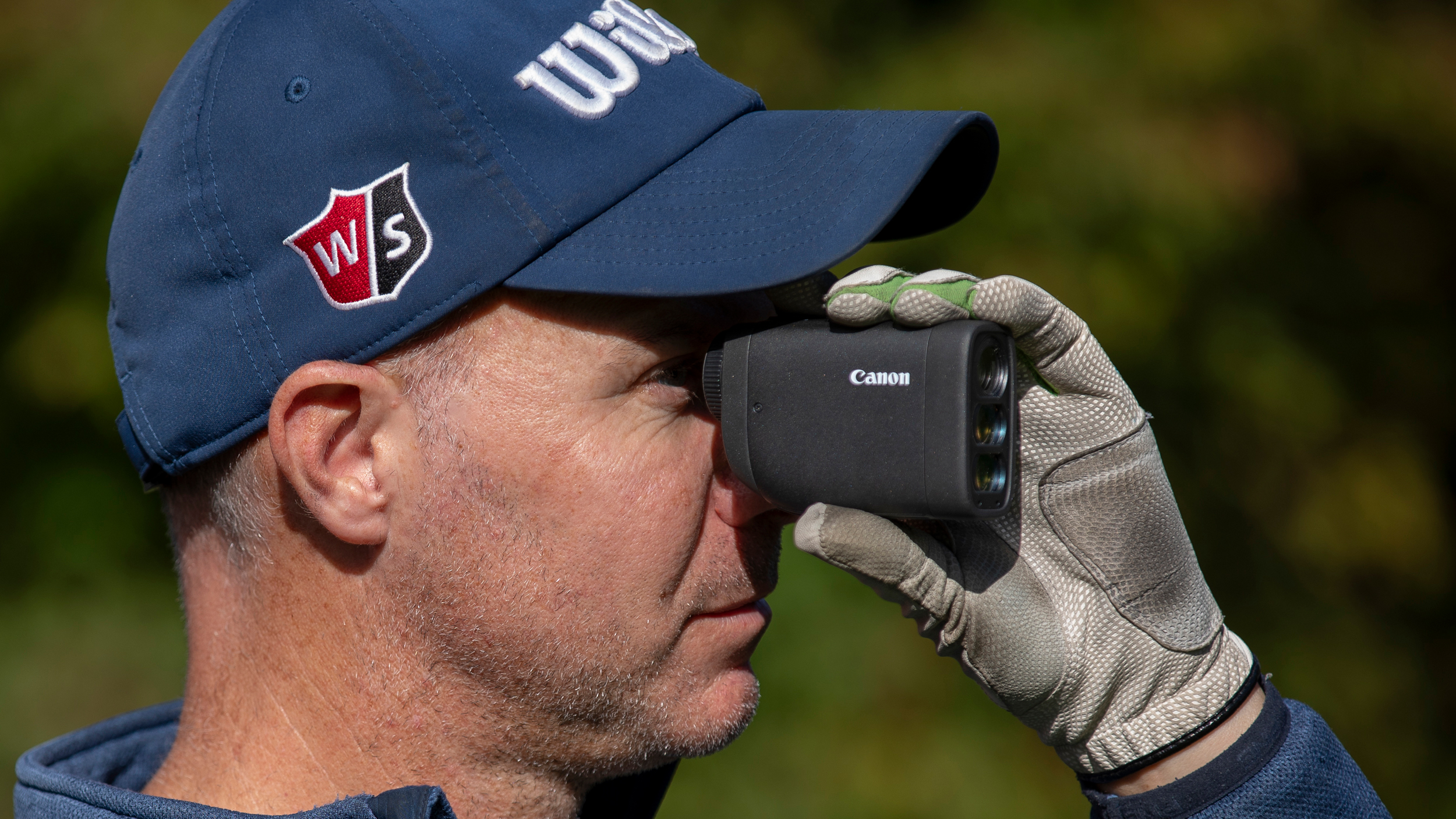
Verdict
Canon has used its camera and photography knowhow to create a unique device for golfers, a slick rangefinder that doubles as a camera. Using the Canon PowerShot Golf on the course throughout several rounds of golf, I find it to be an excellent laser rangefinder. Thanks to a bright EVF and Image Stabilization, it’s a breeze to zap flags to get accurate yardages and help me pick the right club. I don’t think I'll use the basic camera for average on-course photos and videos, although it is cool to be able to capture images showing the flag and distances for your records. Overall, the Canon PowerShot Golf is an attractive proposition for all golfers looking for a small but reliable rangefinder, and at a competitive price when compared to traditional golf rangefinders.
Peter has been a journalist for over 20 years, he’s been editor of PhotoPlus: the Canon Magazine for the past 13 years, and is also a photographer, but he tries not to let his work get in the way of his regular weekend golf. He started playing in his teens, played on-and-off in his 20s, a bit more often in 30s, and since his 40s he’s played much more regularly, around family commitments. Now based between Bath and Bristol, next to his local Saltford golf course, Peter got his handicap down to 7 a couple of years ago, but it’s crept up to 11. He’s having lessons and is always interested in new golf gear to help improve his game! His golfing highlights include going to Augusta in 2019, the year of Tiger’s comeback Masters win.
Peter’s current What’s In The Bag?
Driver: TaylorMade Stealth 2 Plus - 9 degree with Mitsubishi Kalii 60X stiff shaft
Three wood: TaylorMade M3
Irons: TaylorMade PSi - 3 iron to PW with KBS shafts
Wedges: TaylorMade R-series Tour Grind, 52, 56, and 60 with KBS shafts
Putter: Scotty Cameron Super Select Newport 2 (2023)
Ball: Titleist Pro V1
